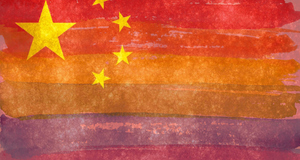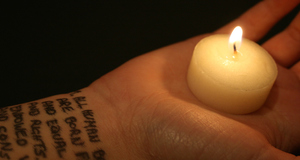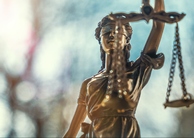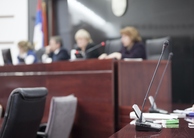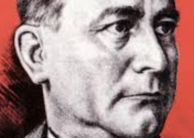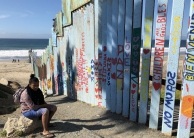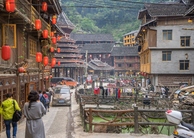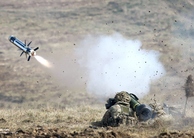Structural Violence in the Queer Community: A Comparative Analysis of International Human Rights Protections for LBTIQ+ People
By
2021, Vol. 13 No. 12 | pg. 1/1
IN THIS ARTICLE
KEYWORDS
AbstractThis paper discusses the structural violence experienced by lesbian, gay, bisexual, trans, intersex, or queer (LGBTIQ+) people and people with disabilities (PWD), and reviews the international human rights protections available to each group through United Nations (UN) processes. It begins by exploring the human rights issues faced by LGBTIQ+ people, the impacts on their health and wellbeing, and the lack of international systems in place to protect them. It then repeats the process for PWD and highlights the efficacy of the protections afforded them. A comparative analysis contextualises the current state of international human rights protections for LGBTIQ+ people by comparing them to those of PWD. It is shown that despite similarly mature community-based movements, the progress towards international LGBTIQ+ human rights has been significantly slower. While LGBTIQ+ people and PWD are two distinctly different and diverse groups, I argue that this disparity is not warranted given the similarities in experiences of structural violence and discrimination. In particular, I contend that underlying biases toward LGBTIQ+ people have resulted in inequity within the international human rights discourse. However, a UN international human rights instrument is a vital component in addressing the structural violence and discrimination faced by LGBTIQ+ people. IntroductionUnited Nations (UN) international human rights instruments frequently reiterate the principle of freedom and equality for all people, including in legally binding treaties. Despite this, people who do not necessarily fit into socially and culturally accepted norms may feel as though these words are not for them. This paper considers the experiences of structural violence and discrimination of two such groups; lesbian, gay, bisexual, trans, intersex, or queer (LGBTIQ+) people and people with disabilities (PWD). Around the world, these groups do not have equal systemic dignity and rights, and often experience structural violence and discrimination that can have serious effects on their health and wellbeing (Katz-Wise & Hyde, 2012, McPhedran & Baker, 2012). While both groups experience significant marginalisation, there is a UN international human rights instrument specifically addressing the rights of PWD, the Convention on the Rights of Persons with Disabilities (CRPD, 2008), whereas no such focus exists for LGBTIQ+ people. The implication of this is that the gravity and frequency of abuses against them do not require specific attention (Tatchell, 2015). Some states are hesitant to give specific attention to LGBTIQ+ issues or to discuss implementing the necessary protections (UN General Assembly, 2008b; UN Human Rights Council, 2012). However, Donnelly (1999) suggests that structural violence and discrimination may only be properly addressed by formal inclusion in the UN international human rights discourse. In this paper, I review the structural violence and discrimination faced by both LGBTIQ+ people and PWD and outline the recent history of UN international human rights protections for each group. Through comparative analysis, I argue that the current differences in the protections afforded LGBTIQ+ people and PWD are not warranted given the similarities between these groups. While community-based liberation efforts have resulted in many recent successes, this paper focuses on demonstrating that a UN international human rights instrument is another vital component in reducing the structural violence and discrimination faced by LGBTIQ+ people. I begin by exploring the human rights issues faced by LGBTIQ+ people and the impacts on their health and wellbeing, followed by an outline of the history leading up to the current state of international human rights protections afforded them through UN processes. I repeat this process for PWD in order to understand the efficacy of a focused UN international human rights instrument. A comparative analysis then contextualises the current state of UN international human rights protections for LGBTIQ+ people by comparing them to those of PWD. It is shown that despite similarly mature community-based movements, the progress towards international LGBTIQ+ human rights has been significantly slower. The rationale for this is discussed, followed by suggested change strategies. MethodologyLGBTIQ+ people and PWD have historically been devalued and faced entrenched social and cultural segregation. This has resulted in strong community-based human rights movements of a similar maturity. Corbett (1994) argues that there are several experiential similarities, including stigma, normalisation, the impetus to "pass" (being perceived as fitting the social norm), coming out (self-disclosure), and pride (self-affirmation). Both groups are estimated to be similarly sized minority populations. While no definitive statistics of the LGBTIQ+ population exist, reports range from 5-10% (Tatchell, 2015); though this is likely to be higher due to the need for many people to hide their identity (Human Rights Watch, 2018). For example, in a recent survey of the British population, 23% of adults identified as something other than heterosexual (Dahlgreen & Shakespeare, 2015). The World Health Organisation (2011) estimated that approximately 15% of the global population live with some form of disability, including mental illness. Both groups also consist of a range of distinct sub-groups, some of which also experience additional forms of discrimination. Despite these broad similarities, a UN international human rights instrument for PWD has recently been implemented after years of discussion and consultation, yet no such thing exists for LGBTIQ+ people. A formal process of addressing structural violence against PWD has commenced with the recent development of the CRPD (2008). This is critically important because of the unique issues that they face (Hague, Thiara, & Mullender, 2011). However, no such process exists for LGBTIQ+ people at the international level. Instead, the ambiguous term "other status", used throughout UN international human rights discourse, is applied to this group (Tatchell, 2015). This paper offers a comparative analysis (Walk, 1998) whereby the experiences of PWD are used to contextualise those of LGBTIQ+ people. This methodology was selected as the most appropriate to clearly outline the similarities between the two groups as a rationale for reviewing the disparity in UN international human rights protections through systematic comparison (Andreassen, 2017, p.230). I begin by discussing the concepts of marginalisation and oppression and their motivations, including the differences in attitudes toward PWD and LGBTI people. I then outline the similarities in individual violence and discrimination directed at each group, and the differences in the UN international human rights protections available. As a researcher and member of LGBTIQ+ communities in a predominantly western Anglophone context, my focus is on exploring the lack of UN international human rights protections available to LGBTIQ+ people through a queer feminist lens as a means of challenging socially constructed hierarchical divisions that exclude those who do not conform. Queer theory focuses on the subversion of power through the fragmentation of normative sexuality and gender (Watson, 2005). As with post-modern feminism, it aims to disrupt societal assumptions about gender and sexuality by asserting that because of the numerous and intertwined facets that contribute to human diversity, there are no true societal majority / minorities (Beasley, 2005). The disability rights movement was historically influenced by these ideas (Kayess & French, 2008) and there remains many overlaps with critical disability studies (Bickenbach, Chatterji, Badley & Ustun, 1999). It is acknowledged that the methodology used in this paper requires some oversimplification of complex and diverse groups of people to allow for comparison. Recognising that LGBTIQ+ people and PWD are distinctly different and diverse, it is not my intention to conflate identities or compare the evidence of marginalisation. Rather, through Stuart Hall’s (1985) Theory of Articulation, I attempt to construct a connection between the two groups based on experiences of violence and discrimination. I do not currently have a disability, so I am unable to speak from a place of lived experience in this regard. However, I have tried to be respectful of all lived experiences within the scope of my understanding and I have referenced organisations led by and for PWD, utilising their language and frameworks as much as possible. I am particularly mindful of the “Hypatia” controversy, whereby a white cisgender academic wrote a philosophical piece comparing transracial and transgender identities (Tuvel, 2017) and was subject to extensive criticism. I aim to address some of these potential criticisms in my work through my methodology and by providing clarity about my argument (Travers, 2017). This paper does not fully explore issues of intersectionality and is not a comprehensive global analysis; it occasionally draws on examples from the Human Rights Watch World Report (2018) to illustrate particular points. Lesbian, Gay, Bisexual, Trans, and Intersex PeopleHeteronormativity is the assumption that gender, sexuality, and bodies are aligned in a particular way. For example, in a heteronormative world it is most socially acceptable for “biological males,” who feel and behave like "men", to have sexual relationships with “biological females,” who feel and behave like "women". People who fit within these norms experience societal power and privileges that are not available to LGBTIQ+ people, who do not fit within these norms (Dalton, Elias, & Wandersman, 2007, p.215). Instead, they are subject to homophobia, biphobia, transphobia, and interphobia, often leading to socially acceptable exclusion and discrimination (Barker, et. al., 2012). Although they are distinctly different concepts, heteronormativity constructs an arbitrary interconnection between gender, sexuality, and bodies. Gender, the societal stereotypes of appropriate identities and behaviours based on biological sex, has historically been considered a binary concept in western societies. This binary creates an oppositional division in which women and those who do not conform are considered inferior (Beasley, 2005). The 1969 Stonewall Riots in New York were a response to structural violence in the form of unprovoked police raids at gay bars at a time when same sex relations were illegal in many parts of the world. These events sparked non-violent community organising across the USA and are often thought of as the catalyst for the western LGBTIQ+ rights movement (Duberman, 1993). Since then, acceptance of LGBTIQ+ people has increased significantly over time, with a growing number of countries legalising same-sex marriage and increasing other legal protections. For example, in landmark decisions, India recognised trans people as a third gender in 2014 and decriminalised same-sex relationships in 2017 (Human Rights Watch, 2018). Unfortunately, structural violence and discrimination against LGBTIQ+ people persists and can have serious impacts on their health and wellbeing (Katz-Wise & Hyde, 2012). Structural Violence & DiscriminationDiscrimination against LGBTIQ+ people is a global issue, ranging from discrimination at the individual level through to systemic laws and practices that persecute people based purely on their gender, sexuality, or bodies (UN High Commissioner for Human Rights, 2011). It has been consistently reported that LGBTIQ+ people face excessive individual discrimination compared to heterosexual cisgender endosex people. Katz-Wise and Hyde (2012) performed a meta-analysis of global studies from the period 1992-2009 examining individual victimisation based on sexual orientation and found that up to 56% of LGB people had experienced some form of victimisation, from verbal to physical / sexual harassment. Trans people experience particularly high rates of violence and murder (UN High Commissioner for Human Rights, 2011), while intersex people face discrimination within health systems that force them to undergo unnecessary medical interventions for the purposes of “normalisation” (World Health Organisation, 2015). This discrimination is very rarely reported (Human Rights Watch, 2018) and as a result, it is common for LGBTIQ+ people to hide or adapt their own daily routines for fear of further discrimination or violence. There is now more acceptance of LGBTIQ+ people, but structural violence remains active in many countries. For example, equal rights to marriage are only available in 26 countries (Pew Research Center, 2017), with a further 27 affording LGBTIQ+ people some or all of the same legal rights of marriage (Human Rights Watch, 2018). Only 28 countries have laws specifically protecting LGBTIQ+ people from incitement of hatred, with others enacting laws that advocate it. For example, Russia prohibited public support for LGBTIQ+ equality in 2014, punishable by large fines / imprisonment, in line with already existing regional laws (Human Rights Watch, 2018). It is illegal to engage in “crimes against the order of nature” in 76 countries; these types of laws are ambiguously worded to discriminate against people based on their actual or perceived sexuality or gender identity (UN High Commissioner for Human Rights, 2011). These crimes are typically punishable by imprisonment (maximum life sentence) and even death in up to nine of these (Itaborahy & Zhu, 2014). In many countries, there has been an increase in public assaults and arrests of LGBTIQ+ people following tightening of laws criminalising them (Human Rights Watch, 2018). State sanctioned violence such as this can create the perception that violence directed at individuals is also acceptable. The High Commissioner for Human Rights (2011) outlined incidences of brutal violence across all regions of the world, ranging from verbal abuse to rape and murder. The USA has recorded LGBTIQ+ violence as second only to racially motivated violence (UN High Commissioner for Human Rights, 2011), which is exemplified by the brutal Orlando nightclub massacre in 2016 (Signorile, 2016). Since the legislative changes in Russia, violent attacks on LGBTIQ+ people have increased dramatically with very few convictions (Human Rights Watch, 2018). In many countries that criminalise same sex relations, discrimination is often not reported for fear of further repercussions (Human Rights Watch, 2018). Women are often the target of this violence, which may include anything from verbal harassment to physical beatings, murder, and "corrective rape"; a heinous form of sexual assault that aims to correct a person's actual or perceived sexual orientation / gender identity (Anguita, 2012). In the western world, people whose gender or bodies fall outside of social norms (TI) are more vulnerable to victimisation than those whose sexual orientation falls outside of social norms (LGB). One of the reasons for this is that gender / sex ambiguity is still pathologised, unlike sexual orientation (Dreger & Herndon, 2009). These individuals are also likely to experience both transphobia / interphobia and homophobia regardless of their actual sexual orientation (Beemyn & Rankin, 2011, p.5). It is common for trans people to face barriers obtaining legal documentation that accurately reflects their gender identity, and unnecessary medical interventions for people with intersex variations is a particularly violent practice that still commonly occurs (de María Arana, 2005). It is illegal in some countries to "cross-dress", and people may face a range of state sanctioned abuses such as arbitrary arrest, imprisonment, and denial of healthcare (Human Rights Watch, 2018). Bisexual people are more likely than homosexual people to have poor health (Fredriksen-Goldsen, et. al., 2010) and to be victimised (Barker, et. al., 2012; Katz-Wise & Hyde, 2012) due to negative stereotypes of indecisiveness and promiscuity (Russel & Seif, 2010; Weiss, 2003). Even within the LGBTIQ+ community, bisexual, trans, and intersex people face discrimination (Ulrich, 2011). In addition to this, research efforts tend to focus on gay and lesbian populations; people who identify as BTI are usually categorised as one of these and as a result, significantly less specific sub-group research is available (Fredriksen-Goldsen, et. al., 2010). This perpetuates the invisibility commonly faced by these groups both within the LGBTIQ+ community and more broadly in society (Beemyn & Rankin, 2011, p.4; Russel, & Seif, 2010; Ulrich, 2011). Overall, structural violence and discrimination has a negative impact on the health of LGBTIQ+ people (Haas, et. al., 2010; Katz-Wise & Hyde, 2012; Leonard, et. al., 2012; Warner, et. al., 2004). Social stigma and a lack of knowledge about LGBTIQ+ health exacerbate these issues (World Health Organisation, 2013). Mental health outcomes are particularly poor for LGBTIQ+ people; where 20% of the average population experience major depression, approximately 75% of LGBTIQ+ report it (Pitts, et. al., 2006). Some evidence suggests that in comparison to the rest of the population there is a higher proportion of LGBTIQ+ people attempting suicide, but data on gender, sexuality, and intersex status is not normally collected for completed suicides (Haas, et. al., 2010). Within the LGBTIQ+ population, more recent studies have found that in comparison to homosexual people, mental health outcomes are particularly poor for bisexual (Barker, et. al., 2012; Fredriksen-Goldsen, et. al., 2010), trans, and intersex people (Leonard, et. al., 2012). Trans women and men are most at risk of suicide (Haas, et. al., 2010) and face more barriers to accessing medical services (World Health Organisation, 2013). Conversely, intersex people are subject to unnecessary surgeries and other medical interventions over their lifetimes that often have long-term impacts on their physical and mental health (World Health Organisation, 2015). Human Rights ProtectionsDespite a long history of structural violence and discrimination around the world, it was only just over 20 years ago that the UN first acknowledged human rights violations against LGBTIQ+ people. In 1991, Australian Nicholas Toonen made a complaint to the UN Human Rights Committee under the International Covenant on Civil and Political Rights (Articles 2.1, 17, 26) about discriminatory local laws in his home state of Tasmania that criminalised private consensual sex between men. The UN Human Rights Committee ruled in favour of Mr. Toonen (Communication 488/1992) and since this ground-breaking decision, the UN bodies have explicitly referenced any mention of "other status" in human rights instruments as inclusive of diverse sexual orientation, gender identity, and intersex status (UN Economic and Social Council, 2009). These developments resulted in international discussions and the Declaration of Montreal (2006) and the Yogyakarta Principles (originally developed in 2006 and updated 2016), advocacy tools focusing on human rights entitlements and the relationship between international human rights law and LGBTIQ+ issues (Cviklova, 2012). Both documents express frustration at the lack of any substantial response to these issues by the UN at the time. As a follow up, a group of nations mainly from Europe and South America presented a document at the UN General Assembly (2008a) that expressed disapproval at the extent of human rights violations against LGBTIQ+ people and urged states to take necessary measures. Support from 66 countries was gained for the document, which is now known as the Declaration on Sexual Orientation and Gender Identity. However, 57 African and Asian countries opposed the document and developed an opposing statement (2008b) that expressed concern at the introduction of special rights for LGBTIQ+ people. The Syrian Statement, as it became known, reinforced state sovereignty and the principle of UN non-intervention. It claimed that there was no scientific or legal basis for sexual orientation or gender identity, and conveyed apprehension that "other deplorable acts" such as paedophilia would be normalised as a result of LGBTIQ+ rights. It recommended that the UN instead continue to concentrate on "more important" issues such as racism and xenophobia (UN General Assembly, 2008b). The first formal UN led discussions relating to LGBTIQ+ human rights occurred in 2012 (UN Human Rights Council, 2012). The discussions followed a report (19/41) delivered to the Human Rights Council by the High Commissioner for Human Rights, which raised "grave concerns" about the serious issues of violence and discrimination against LGBTIQ+ people around the world and reiterated the mandate of the UN and member states to prevent such activities. It also discussed international initiatives that had already been implemented and made further recommendations for states to address these issues. The report was once again met with both support and objections at the Human Rights Council meeting in 2012. The objections were again based on culture, religion, or the pertinence of these issues in the human rights discourse. States supportive of LGBTIQ+ protections stressed the need for ongoing monitoring of LGBTIQ+ issues given the extent of the human rights violations, and ongoing dialogue at the UN level given the disagreement (UN Human Rights Council, 2012). In 2014, the UN Human Rights Council requested an update on the 2011 report, which was supported by 25 states and opposed by 14, with seven abstentions (resolution 27/L.27/Rev.1). In a more recent effort led by a group of South American nations, the UN Human Rights Council voted to appoint an Independent Expert on Sexual Orientation and Gender Identity in 2016 (resolution 32/2) with a mandate to review existing international human rights instruments and practices to address violence and discrimination against LGBTIQ+ people. The journey to international support of LGBTIQ+ human rights has only just begun, but the UN and supporting states / organisations continue to advocate and build awareness (UN Office of the High Commissioner for Human Rights, 2011). People with DisabilitiesAs a group, PWD are as diverse as LGBTIQ+ people, encapsulating people with any "long-term physical, mental, intellectual, or sensory impairments" (UN CRPD, 2008). Historically, PWD were devalued and segregated from the rest of society as people with a failing that must be overcome. However, the World Health Organisation (2011) notes that disability is not simply a medical issue, but also a social / environmental issue, whereby negative attitudes and physical barriers to access play a significant role in hindering full participation. Based on this premise, and inspired by the civil, feminist, and LGBTIQ+ rights movements, the disability rights movement also intensified in the 1960s (Kayess & French, 2008). The turning point for the disability rights movement occurred in 1981 when the UN General Assembly declared the International Year of the Disabled Person (resolution 31/123), uniting PWD in their fight against human rights violations. Following this, many countries implemented local legislation protecting PWD from discrimination, with a UN international human rights instrument, the CRPD, entering into force more recently. Despite these protections, PWD continue to face violence and discrimination in the form of inequality, violations of dignity, and denial of autonomy (World Health Organisation, 2011), as well as more serious abuse and violence ranging from physical restraint to rape (Hague, Thiara, & Mullender, 2011). Structural Violence & DiscriminationPWD may face a number of unique barriers, such as communication difficulties, reliance on others, and a perceived lack of credibility, that make them particularly vulnerable to discrimination at the individual level (Hague, Thiara, & Mullender, 2011). Structural violence and societal misconceptions about disability compound these issues. For example, some PWD may be treated like children long into adulthood and miss out on opportunities to make important decisions about their own lives (French, Dardel & Price-Kelly, 2009). They may also be subject to humiliating jokes, teasing, and verbal abuse (Sherry 2003). Discrimination / social exclusion such as this is often the most significant barrier to full participation in the community for PWD, as opposed to any personal impairment. PWD are also extremely vulnerable to serious violence and abuse, which can result in longer-term impacts such as mental health issues, substance abuse, and homelessness (McPhedran & Baker, 2012). The World Health Organisation (2011) estimates that PWD are almost twice as likely as those without a disability to experience violence, and this increases to nearly four times the risk for people with mental illness. Acts of violence that tend to be exclusively experienced by PWD include financial abuse, isolation / humiliation, withholding of care / medication, chemical restraint, and non-therapeutic sterilisation / abortion (Human Rights Watch, 2018). The perpetrators of this violence may be staff, family members, or strangers (Attard & Price-Kelly, 2010). In institutions / supported living arrangements specifically for groups of PWD, discrimination ranging from emotional / psychological abuse to physical / sexual abuse is often experienced (French, Dardel & Price-Kelly, 2009). Sexual violence in these environments is usually perpetrated by support workers and is usually persistent. Often these incidents are not reported due to shame or a fear of further disadvantage, which commonly occurs in the form of removal to sub-standard accommodation or invalidation by service providers and police (Sherry 2003). This can result in a failure to conduct comprehensive investigations leading to convictions (French, Dardel & Price-Kelly, 2009), demonstrating the challenges faced by PWD at an individual level and a systemic level. Negative attitudes toward PWD have been shifting, particularly since the 1980s (Human Rights Watch, 2018). However, dangerous links between witchcraft and disability are still made in some areas of Africa, perpetuating stigma and often resulting in violence (Groce & McGeown, 2013). Invisibility also remains an issue in many areas of life (World Health Organisation, 2011), including education, employment, housing, transport, legal rights, life decisions, institutionalisation, and accessibility (Human Rights Watch, 2018). For example, in China one in four children with disabilities do not attend school due to discrimination, and university enrolments can be denied based on certain disabilities (Human Rights Watch, 2015). Exclusion from education and employment results in high rates of poverty and economic dependence among PWD (French, Dardel & Price-Kelly, 2009). In many countries, PWD have extremely limited legal rights to make important decisions about their lives, with some allowing them fewer rights than children. This also extends to criminal justice, where PWD tend not to be provided with adequate legal supports and are more likely to be imprisoned as a result (Human Rights Watch, 2018). When PWD are deemed "unfit to stand trial" because of their disability, they can often remain incarcerated indefinitely, either in prison or another institution, without consent (Human Rights Watch, 2018). This is most commonly inflicted upon people with mental illness, who face additional barriers than other PWD, including stereotypes that they may be dangerous or unpredictable (French, Dardel & Price-Kelly, 2009). Some countries also use involuntary psychiatric treatment and solitary confinement as a form of punishment for people with mental illness (Human Rights Watch, 2018). Unfortunately, punitive measures in institutions are no substitute for adequate mental health care, and a relationship has been found to exist between deaths in custody and untreated mental health issues (French, Dardel & Price-Kelly, 2009). Due to the lack of adequate services and facilities, people with mental illness in Indonesia may be shackled and chained to trees or detained in confined spaces in hospitals and places of worship. In Papua New Guinea, mental health care is largely unavailable and people with mental illness rely only on traditional healers (Human Rights Watch, 2015). A lack of availability of mental health services exacerbates the already poor health outcomes for people with mental illness (and for PWD more broadly), which includes lower life expectancy, higher rates of physical health issues, and lower social and economic participation (Human Rights Watch, 2018). Human Rights ProtectionsThe rights of PWD are far from fully realised. However, the shift from a medical model (PWD require treatment and pity) to a social model (society should accommodate the impairments of PWD) was an important turning point. Up until the 1980s, only brief paternalistic and potentially offensive international human rights instruments focused on health care were in place. The 1981 International Year of Disabled Persons (1976) raised the rights of PWD as an international issue and led to the Decade of Persons with Disabilities in 1982 (and the introduction of an annual International Day of Persons with Disabilities at the end of that). In the same year, the UN General Assembly launched the World Programme of Action Concerning Disabled Persons (resolution 37/52), which focused on equal opportunities for PWD. This included the appointment of a Special Rapporteur in 1984 resulting in the Human Rights and Disabled Persons Report (Despouy, 1991), which first proposed a UN international human rights instrument for PWD. The report also outlined the unique discrimination faced by people with mental illness, which prompted the UN General Assembly adoption of the Principles for the Protection of Persons with Mental Illness and the Improvement of Mental Health Care (resolution 46/119). However, this document was heavily criticised for its return to a medical model (Kayess & French, 2008).As a precursor to the CRPD, some states enacted local legislation to prohibit discrimination against PWD, and increased pressure to develop an international instrument (McBeth, Nolan & Rice, 2011). In 2001, the UN High Commissioner on Human Rights commissioned a study into the effectiveness of existing UN international human rights instruments in the context of PWD (Quinn, et. al., 2002), which recommended that an international instrument specifically focused on PWD be developed. The CRPD entered into force in 2008 (resolution 61/106) with overwhelming support; there were 82 signatories and one ratification on its opening day (McBeth, Nolan & Rice, 2011). There are now 159 signatories and 154 ratifications (UN Treaty Collection, 2015). Since the CRPD is an internationally recognised treaty, it is legally binding for those states that have ratified it. As such, these states are bound to the ongoing reporting and monitoring processes of the UN treaty body, the Committee on the Rights of Persons with Disabilities. This includes a periodic review every four years, where states and NGOs report on performance against the treaty for comments and recommendations from the treaty body (McBeth, Nolan & Rice, 2011).In addition, the Special Rapporteur works with the global community and other human rights bodies to further support the realisation of human rights for PWD (UN General Assembly, 2014). Overall, states have been very supportive of the CRPD at the local level. While some initial concerns about "special" rights were voiced in the lead up to the CRPD, it has become one of the most supported international human rights instruments in history and its necessity is now widely accepted (McBeth, Nolan & Rice, 2011). Comparative AnalysisStructural violence against particular social groups occurs in hierarchical power systems that are usually based on the innate characteristics of a socially accepted majority (Dalton, Elias, & Wandersman, 2007, p.215). For example, heteronormativity deems LGBTIQ+ people to be socially deviant (Barker, et. al., 2012). Similarly, ableism assumes that able-bodied people are the norm, suggesting that PWD are somehow inferior (McBeth, Nolan & Rice, 2011). Those who meet societal expectations experience unearned power and privilege, while those who do not are subject to structural violence and discrimination; this includes LGBTIQ+ people and PWD. Both groups have historically been devalued as people that should be segregated from the rest of society because of socially constructed failings. In its most extreme form, LGBTIQ+ people and PWD were specifically targeted victims of the holocaust in Nazi Germany, along with several other minority groups (Kershaw,1991). History such as this has resulted in strong community-based advocacy movements around the world. As with queer theory, which aims to disrupt societal assumptions about identity in relation to gender, sexuality, and bodies, the social model of disability examines disability as a social construct and not just an impairment caused by a medical issue (Bickenbach, Chatterji, Badley & Ustun, 1999). The social model of disability and the LGBTIQ+ rights movement (among others) inspired the development of the western disability rights movement in the 1960s (Kayess & French, 2008). This quickly led to attention from both the UN and individual states, followed by an international human rights instrument that recently entered into force (CRPD, 2008). Although acceptance and support of LGBTIQ+ people has increased over time (Human Rights Watch, 2018), UN international human rights protections are piecemeal and disparate in comparison. Structural Violence & DiscriminationStructural violence, often historical and sometimes also economic, is rationalised by “social myths” that eventually normalise the oppressive system (Dalton, Elias, & Wandersman, 2007, p.222). Structural violence is at the core of individual discrimination, which is most commonly driven by a natural human discomfort with / fear of diversity and tends to be supported by societal norms (Burn, 2004, p.235). Judith Butler (1993), an influential figure in post-modern feminism and queer theory, states that marginalised identities are simply a set of historically articulated fixed categories that are perpetuated through language / repeated behaviours, rather than an intrinsic state of being. It is this performative nature of socially substantiated norms that creates inequalities by making particular characteristics seem more relevant than they are (Butler, 1993). Fundamental rights to self-determination (International Covenant on Civil and Political Rights (ICCPR) A1; International Covenant on Economic, Social, and Cultural Rights (ICESCR) A1; CRPD A11) and physical and moral integrity (ICCPR A6-7; CRPD A15-17) are not always available to LGBTIQ+ people and PWD. Discrimination against LGBTIQ+ people has generalised moral origins grounded in heteronormativity (Weinberg, 1973), with many religions still containing homophobic teachings (Weinberg, 1973) and some offering "conversion therapies" despite its harmful impacts and a lack of any evidence of effectiveness (American Psychological Association, 2015). These ideas about immorality are at the root of widespread criminalisation (Itaborahy & Zhu, 2014) and medical pathologisation; the American Psychiatric Association only removed homosexuality as a psychopathology in 1973, gender dysphoria is still a diagnosis that trans individuals must obtain before physically transitioning (Herek, 2008), and unnecessary medical interventions for people with intersex variations is still common practice (de María Arana, 2005). Herek's (2008) social psychological model of attitudes toward LGBTIQ+ people describes three main functions: experiential, defensive, and symbolic. He suggests that both positive and negative attitudes can be attributed to one or a combination of these functions. The experiential function relates to personal interactions with LGBTIQ+ people (Hansen, 1982), the defensive function is based on projections of unconscious insecurities about gender, sexuality, and bodies (Weinberg, 1973), and the symbolic function is based on ideological concerns such as cherished values or religious beliefs (Herek, 2008). It is likely that the experiential function also applies to attitudes about PWD, but it is harder to argue the broad applicability of the defensive and symbolic functions, which are grounded in heteronormativity and morality for LGBTIQ+ people. While there are some areas in Africa that still link disabilities to witchcraft and connections to the devil (Groce & McGeown, 2013) the origins of discrimination against PWD are rooted mainly in a medicalised model of pity and benevolence (McBeth, Nolan & Rice, 2011). The societal focus for both PWD and LGBTIQ+ people has historically been on "fixing their problem.” This has led to similar experiences of structural violence and discrimination, violating the fundamental right to non-discrimination (ICCPR A2(1),3,26; ICESCR A2(2),3; CRPD A5,12). PWD are particularly vulnerable to discrimination because of their unique challenges and societal stereotypes of disability (Hague, Thiara, & Mullender, 2011). They regularly experience verbal abuse (Sherry 2003), social exclusion, and are discouraged from making their own decisions (French, Dardel & Price-Kelly, 2009). They are also significantly more likely than those without a disability to experience serious violence and abuse (World Health Organisation, 2011) at the hands of both strangers and people they know (Attard & Price-Kelly, 2010). While they are not necessarily more vulnerable, LGBTIQ+ people similarly face discrimination (Pitts, et. al., 2006), particularly in the form of verbal and physical / sexual harassment (Katz-Wise & Hyde, 2012). Brutal violence including rape and murder occurs in many countries around the world (High Commissioner for Human Rights, 2011), often with no convictions (Human Rights Watch, 2018) violating the fundamental right to effective remedy (ICCPR A2,14-16; CRPD A5,12-14). Among PWD, people with mental illness face many additional barriers, including indefinite incarceration / institutionalisation, involuntary psychiatric treatment, and inadequate mental health care (Human Rights Watch, 2018). Likewise, among the LGBTIQ+ population, bisexual, trans, and intersex people are more vulnerable to victimisation than homosexual people (Barker, et. al., 2012; Katz-Wise & Hyde, 2012; Leonard, et. al., 2012). This can occur in the form of invisibility, intersectional discrimination, (Beemyn & Rankin, 2011, p.4; Dreger & Herndon, 2009; Russel, & Seif, 2010; Ulrich, 2011), and barriers to appropriate medical services (de María Arana, 2005; World Health Organisation, 2013). It is common for both PWD and LGBTIQ+ people not to report these human rights violations due to shame or fear of further disadvantage (Human Rights Watch, 2018; Sherry 2003). However, these violations can lead to long-term issues such as mental illness, substance abuse, and homelessness, in addition to the obvious immediate impacts (French, Dardel & Price-Kelly, 2009; McPhedran & Baker, 2012). These barriers and consequences exemplify violations of the fundamental rights to quality of life (ICCPR A27; ICESCR A6,9,11,13-15; CRPD A24,28) and physical and mental health (ICCPR A6(1); ICESCR A12; CRPD A17,25-26). Human Rights ProtectionsLGBTIQ+ people and PWD are distinctly different and diverse groups, but share similarities based on the origins and personal experiences of structural violence and discrimination. However, recent discourse and UN international human rights instruments that are in place to address it are vastly different. For PWD, the UN enforced formal declarations as early as the 1970s, eventually resulting in the CRPD entering into force in 2008 with overwhelming support (McBeth, Nolan & Rice, 2011). In the lead up its development, there were some initial concerns about the addition of "special" rights for PWD, but its necessity was widely accepted by the time it was enforced (Kayess & French, 2008). There has been overwhelming support for the CRPD, particularly by Asian and African states where almost 70% of the world's population of PWD live (McBeth, Nolan & Rice, 2011). On the other hand, the move to UN international human rights protections for LGBTIQ+ people has progressed less swiftly, despite the movement’s relative maturity in comparison to the disability rights movement. The UN first acknowledged human rights violations against LGBTIQ+ people in 1991, tabling a document in 2012 that conveyed disapproval at the extent of human rights violations (High Commissioner for Human Rights, 2011) that was met with both support and objections. The idea of introducing rights specifically for LGBTIQ+ people was actively opposed by 57 states in 2008, many of which were in Asia and Africa (UN General Assembly, 2008b; UN Human Rights Council, 2012). These states tabled a counter statement, which claimed that there was no scientific or legal basis for sexual orientation or gender identity and compared LGBTIQ+ issues to various heinous criminal sexual offences. The statement suggested that there were "more important" issues of focus, and reinforced state sovereignty and the non-interventionist role of the UN (UN General Assembly, 2008b). In 2012, the same objections were once again raised (UN Human Rights Council, 2012). The main objections to a UN international human rights instrument for LGBTIQ+ people are based on culture, religion, and relevance, and come predominantly from Asian and African states. These states have expressed that the global human rights movement is driven by western interests, seeking to impose western values on the rest of the world (Teson, 1985). This is understandable given that the movement is commonly portrayed as an American project that was led by Franklin and Eleanor Roosevelt, and inspired by existing western declarations (Waltz, 2001). However, most UN international human rights instruments now receive broad support internationally and, in this context, the suggestion that same-sex attraction is a western concept has been contradicted on numerous occasions (Donnelly, 1999). Religious arguments against international LGBTIQ+ human rights protections are also common in regions where religious belief is more prevalent (Zuckerman, 2007), and are often used to support deeply ingrained social prejudices (Donnelly, 1999). This is in alignment with the symbolic function (based on ideological concerns) of Herek's (2008) social psychological model of attitudes toward LGBTIQ+ people. However, international human rights protections for PWD apply even in those places that link disability to witchcraft. Another argument raised against LGBTIQ+ international human rights protections is a lack of scientific evidence for immutability, but there have been many studies since the 1990s confirming a biological basis of gender and sexuality (Mucciaronio & Killian, 2004). While still a significant concern, the Committee for the Rights of PWD now holds states accountable for the human rights of PWD against the CRPD. However, structural violence against PWD is still an issue in many important areas of life including education, employment, and legal rights (Human Rights Watch, 2018; World Health Organisation, 2011). Conversely, systemic issues ranging from inequality to state-sanctioned violence against LGBTIQ+ people remain active in many countries, with little or no accountability. These include inequitable marriage rights, incitements of hatred (Human Rights Watch, 2018), imprisonment / death (Itaborahy & Zhu, 2014), and unnecessary medical interventions for people with intersex variations (de María Arana, 2005). Given the similarities between LGBTIQ+ people and PWD outlined in this paper, arguments against a UN international human rights instrument for LGBTIQ+ people based on symbolic biases are insufficient to warrant this disparity. Herek (2008) proposes that symbolic function attitude change must occur at structural and individual levels to see progress. This can include increased public exposure to positive LGBTIQ+ role models through community-based awareness campaigns (which also addresses the experiential function to a degree), and reinterpretations of religious ideas to promote and extend ideas of inclusivity. As Donnelly (1999) points out, decriminalisation, which has occurred in most western states, has not made enough of an impact on issues of structural violence. He suggests that the only real way to combat discrimination against LGBTIQ+ people is full inclusion in the UN international human rights discourse, as has occurred for PWD. It is also vital that community-based grassroots groups continue leading the movement at a local level, as they are uniquely placed to understand specific structural and cultural contexts (The All Party Parliamentary Group of Global LGBT Rights, 2016). For example, third gender recognition and decriminalisation in India was achieved locally within existing cultural norms (Human Rights Watch, 2015). Oppressive systems must be dismantled collectively; that is, leadership and involvement from the oppressed group, supported by allies within the privileged group (Dalton, Elias, & Wandersman, 2007, p.222). ConclusionThis analysis suggests that a commensurate human rights instrument for LGBTIQ+ people is imperative following the important development of an instrument for PWD. LGBTIQ+ people and PWD are two distinctly different and diverse groups that share similarities in experiences of structural violence and discrimination. Both groups have historically been devalued and segregated from society, and have similar experiences in relation to stigma, normalisation, the impetus to "pass", coming out, and pride. While a UN international human rights instrument is in place to protect PWD from this discrimination, no such protections exist for LGBTIQ+ people. Through comparative analysis, I have argued that this disparity is not warranted given the similarities between LGBTIQ+ people and PWD. I contend that underlying symbolic biases toward LGBTIQ+ people have resulted in inequity within the UN international human rights discourse. The most obvious outcome of this inequity is at the systemic level, where states are held accountable for protecting the rights of PWD, while protections for LGBTIQ+ people are piecemeal and disparate. Community-based efforts have resulted in many recent successes, but a UN international human rights instrument is another vital component in addressing the structural violence and discrimination faced by LGBTIQ+ people. The main limitation of this paper is that statistics and other specific information may be unreliable given the breadth of the LGBTIQ+ and PWD populations and their intersectionalities. Future research could look more specifically at comparisons across various other marginalised groups and specific countries / regions to contribute data that is more relevant to local advocacy and activism. Deeper analysis of each of the sub-groups and issues of intersectionality would identify any interactions in the motivators for discrimination, as well as the impacts. In particular, case studies of LGBTIQ+ PWD would add a unique perspective that could be used as a point of comparison for future research in this area. AcknowledgementsI would like to acknowledge the Curtin University Centre for Human Rights Education staff, particularly Professor Baden Offord, for their knowledge, compassion, and advice. I would also like to thank Dr Theodore Bennett from the University of WA Law School for his feedback and Dr Richard Palmer for his unwavering support. ReferencesAndreassen, B. A. (2017). Comparative analyses of human rights performance. In Research Methods in Human Rights: A Handbook. Cheltenham, UK: Edward Elgar Publishing. American Psychological Association. (2015). Sexual Orientation and Homosexuality: Answers to Your Questions for a Better Understanding. Retrieved 20 May 2015 from: http://www.apa.org/topics/lgbt/orientation.pdf Anguita, L. A. (2012). Tackling corrective rape in South Africa: the engagement between the LGBT CSOs and the NHRIs (CGE and SAHRC) and its role. The International Journal of Human Rights, 16 (3), 489-516. Attard, M., & Price-Kelly, S. (2010). Accommodating Violence: The Experience of Domestic Violence of People with Disability Living in Licensed Boarding Houses, People with Disability Australia. Retrieved 20 May 2015 from: http://www.pwd.org.au/documents/pubs/Accommodating Violence Report.pdf Barker, M., Richards, C., Jones, R., Bowes-Catton, H., Plowman, T., Yockney, J., & Morgan, M. (2012). The Bisexuality Report: Bisexual Inclusion in LGBT Equality and Diversity. Retrieved 20 May 2015 from: http://www.open.ac.uk/ccig/files/ccig/The%20BisexualityReport%20Feb.2012.pdf Beasley, C. (2005). Gender & Sexuality: Critical Theories, Critical Thinkers. London, UK: Sage Publications. Beemyn, B. G., & Rankin, S. R. (2011). The Lives of Transgender People. New York, USA: Columbia University Press. Bickenbach, J. E., Chatterji, S., Badley, E. M., & Ustun, T. B. (1999). Models of disablement, universalism and the international classification of impairments, disabilities and handicaps. Social Science & Medicine, 48 (1999), 1173-1187. Burn, S. M. (2004). Groups: Theory and Practice. Belmont, Canada: Wadsworth / Thomson Learning. Butler, J. (1993). Bodies that Matter. New York, USA: Routledge. Convention on the Rights of Persons with Disabilities, opened for signature 13 December 2006 (entered into force 3 May 2008). Convention on the Rights of Persons with Disabilities: Optional Protocol, opened for signature 13 December 2006 (entered into force 3 May 2008). Corbett, J. (1994). A proud label: exploring the relationship between disability politics and gay pride. Disability & Society, 9 (3), 343-357. Cviklova, L. (2012). Advancement of human rights standards for LGBT people through the perspective of international human rights law. Journal of Comparative Research in Anthropology and Sociology, 2 (2012). 45-60. Dahlgreen, W, & Shakespeare, A. (2015). One in two young people say they are not 100% heterosexual. Retrieved from: https://yougov.co.uk/news/2015/08/16/half-young-not-heterosexual/ Dalton, J. H., Elias, M. J., & Wandersman, A. (2007). Community Psychology: Linking Individuals and Communities, 2nd Ed. Belmont, Canada: Thomson Higher Education. Declaration of Montreal. (2006). Retrieved 20 May 2015 from: http://www.declarationofmontreal.org/DeclarationofMontreal.pdf de María Arana, M. (2005). A Human Rights Investigation into the Medical “Normalization” of Intersex People: a Report of a Hearing of the San Francisco Human Rights Commission. Retrieved 20 May 2015 from: http://sf-hrc.org/sites/sf-hrc.org/files/migrated/FileCenter/Documents/HRC_Publications/Articles/A_Human_Rights_Investigation_Into_the_Normalization_of_Intersex_People.pdf Despouy, L. (1991). Human Rights and Disabled Persons. Retrieved 20 May 2015 from: http://www.un.org/esa/socdev/enable/dispaperdes0.htm - _ftn1 Donnelly, J. (1999). Non-discrimination and sexual orientation: making a place for sexual minorities in the global human rights regime. In The Philosophy of Human Rights (pp. 547-573). Saint Paul, Minnesota: Paragon House. Dreger, A. D., & Herndon, A. M. (2009). Progress and politics in the intersex rights movement: feminist theory in action. GLQ: A Journal of Lesbian and Gay Studies, 15 (2), 199-224. Director of Public Prosecutions (DPP) v Kumar [2010] CR-13-00419. Retrieved 20 May 2015 from: http://wwda.org.au/wp-content/uploads/2013/12/DPP_v_Kumar.pdf Duberman, M. B. (1993). Stonewall. New York, USA: Dutton. Fredriksen-Goldsen, K. I., Kim, H., Barkan, S. E., Balsam, K. F., & Mincer, S. L. (2010). Disparities in health-related quality of life: a comparison of lesbians and bisexual women. American Journal of Public Health, 100 (11), 2255-2261. French, P., Dardel, J., & Price-Kelly, S. (2009). Rights Denied: Towards a National Policy Agenda about Abuse, Neglect and Exploitation of Persons with Cognitive Impairment. Retrieved 20 May 2015 from: http://www.pwd.org.au/documents/pubs/RightsDenied2010.pdf Groce, N., & McGeown, J. (2013). Witchcraft, Wealth and Disability: Reinterpretation of a Folk Belief in Contemporary Urban Africa. Retrieved 6 March 2018 from: https://www.researchgate.net/publication/320757168_Witchcraft_Wealth_and_Disability_Reinterpretation_of_a_folk_belief_in_contemporary_urban_Africa Haas A. P., Eliason M., Mays, V. M., Mathy, R. M., Cochran, S. D., D'Augelli, A. R., Silverman, M. M., Fisher, P. W., Hughes, T., Rosario, M., Russell, S. T., Malley, E., Reed, J., Litts, D. A., Haller, E., Sell, R. L., Remafedi, G., Bradford, J., Beautrais, A. L., Brown, G. K., Diamond, G. M., Friedman, M. S., Garofalo, R., Turner, M. S., Hollibaugh, A. & Clayton, P. J. (2010). Suicide and suicide risk in lesbian, gay, bisexual, and transgender populations: review and recommendations. Journal of Homosexuality, 58 (1), 10-51. Hague, G, Thiara, R., & Mullender, A. (2011). Disabled women and domestic violence: making the links, a national UK study. Psychiatry, Psychology and Law, 18 (1), 117-136. Hall, S. (1985). Signification, representation, ideology: Althusser and the post-structuralist debates. Critical Studies in Mass Communication, 2 (2), 91-114. Hansen, G. L. (1982). Measuring prejudice against homosexuality (homosexism) among college students: a new scale. Journal of Social Psychology, 117, 233-236. Herek, G. M. (2008). Beyond homophobia: a social psychological perspective on attitudes toward lesbians and gay men. Journal of Homosexuality, 10 (1-2), 1-21. Human Rights Watch. (2018). World Report 2018: Events of 2017. Retrieved 10 January 2019 from: http://www.hrw.org/sites/default/files/wr2015_web.pdf International Covenant on Civil and Political Rights, opened for signature 16 December 1966 (entered into force 23 March 1976). International Covenant on Economic, Social and Cultural Rights, opened for signature 16 December 1966 (entered into force 3 January 1976). Itaborahy, L. P., & Zhu, J. (2014). State-Sponsored Homophobia: A World Survey of Laws: Criminalisation, Protection and Recognition of Same-Sex Love. Retrieved 20 May 2015 from: http://old.ilga.org/Statehomophobia/ILGA_SSHR_2014_Eng.pdf Katz-Wise, S. L., & Hyde, J. S. (2012). Victimization experiences of lesbian, gay, and bisexual individuals: a meta-analysis. The Journal of Sex Research, 49 (2-3), 142-167. Kayess, R., & French, P. (2008). Out of darkness into light? Introducing the Convention on the Rights of Persons with Disabilities. Human Rights Law Review, 8 (1), 1-34. Kershaw,I. (1991). Hitler: A Profile in Power. London, UK: Longman. Leonard, W., Pitts, M., Mitchell, A., Lyons, A., Smith, A., Patel, S., Couch, M., & Barratt, A. (2012). Private Lives 2: The Second Report on the Health and Wellbeing of GLBT Australians. Retrieved 20 May 2015 from: http://www.glhv.org.au/files/PrivateLives2Report.pdf McBeth, A., Nolan, J., & Rice, S. (2011).The International Law of Human Rights.South Melbourne, Vic.: Oxford University Press. McPhedran, S., & Baker, J. (2012). Lethal and non-lethal violence against women in Australia: measurement challenges, conceptual frameworks, and limitations in knowledge. Violence against Women, 18 (8), 958-972. Mucciaroni, G., & Killian, M.L. (2004). Immutability, science and legislative debate over gay, lesbian and bisexual rights. Journal of Homosexuality, 47 (1), 53-77. Pew Research Center. (2017). Gay Marriage around the World. Retrieved 21 March 2018 from: http://www.pewforum.org/2017/08/08/gay-marriage-around-the-world-2013/ Pitts, M., Smith, A., Mitchell, A., & Patel, S. (2006). Private Lives: A Report on the Health and Wellbeing of GLBTI Australians. Retrieved 20 May 2015 from: http://www.glhv.org.au/files/private_lives_report_0.pdf Quinn, G., Degener, T., Bruce, A., Burke, C., Castellino, J., Kenna, P., Kilkelly, U., & Quinlivan, S. (2002). Human Rights and Disability: the Current Use and Future Potential of United Nations Human Rights Instruments in the Context of Disability. Retrieved 20 May 2015 from: http://www.ohchr.org/Documents/Publications/HRDisabilityen.pdf Russel, S. T., & Seif, H. (2010). Bisexual female adolescents: a critical analysis of past research, and results from a national survey. Journal of Bisexuality, 10 (4), 492-509. Seidman, S. (1997). Difference Troubles: Queering Social Theory and Sexual Politics. Cambridge, UK: Cambridge University Press. Sherry M. (2003). Don't Ask, Tell or respond: Silent Acceptance of Disability Hate Crimes. Retrieved 20 May 2015 from: http://www.farnorthernrc.org/mylifemychoice/Hate Crimes-Mark Sherry.pdf Signorile, M. (2016). The Orlando massacre: a reminder of the dangers LGBT people live with every day. In Huffington Post. Retrieved 13 June 2016 from: http://www.huffingtonpost.com.au/entry/orlando-pulse-shooting-lgbt-dangers_us_575d6615e4b0e39a28add385?section=australia Tatchell, P. (2015). LGBT Rights: The Global Struggle for Queer Freedom. Retrieved 20 May 2015 from: http://www.global-briefing.org/2012/10/the-global-struggle-for-queer-freedom/ Teson, F. R. (1985). International human rights and cultural relativism. In The Philosophy of Human Rights (pp. 379-396). Saint Paul, Minnesota: Paragon House. The All Party Parliamentary Group of Global LGBT Rights. (2016). The UK’s Stance on International Breaches of LGBT Rights. Retrieved 20 May 2015 from: http://media.wix.com/ugd/cf74d6_9aef960a172749b6ae9da560b09e8e61.pdf Travers, T. (2017). Teaching moments from the ‘Hypatia’ controversy. In Inside Higher Ed. Retrieved 13 March 2018 from: https://www.insidehighered.com/views/2017/06/30/instructor-analyzes-how-discuss-hypatia-controversy-her-grad-students-essay Tuvel, R. (2017). In defense of transracialism. Hypatia, 32 (2), 263-278. Ulrich, L. (2011). Bisexual Invisibility: Impacts and Recommendations. Retrieved 20 May 2015 from: http://sf-hrc.org/sites/sf-hrc.org/files/migrated/FileCenter/Documents/HRC_Publications/Articles/Bisexual_Invisiblity_Impacts_and_Recommendations_March_2011.pdf The Universal Declaration of Human Rights, adopted and proclaimed 10 December 1948. United Nations. (2012). Born Free and Equal: Sexual Orientation and Gender Identity in International Human Rights Law. Retrieved 20 May 2015 from: http://www.ohchr.org/Documents/Publications/BornFreeAndEqualLowRes.pdf United Nations Economic and Social Council. (2009). Non-Discrimination in Economic, Social and Cultural Rights, UN Doc E/C.12/GC/20. United Nations General Assembly. (1982). World Programme of Action Concerning Disabled Persons, UN Doc A/RES/37/52. United Nations General Assembly. (1991). The Protection of Persons with Mental Illness and the Improvement of Mental Health Care, UN Doc A/RES/46/119. United Nations General Assembly. (2001). Comprehensive and integral international convention to promote and protect the rights and dignity of persons with disabilities, UN Doc A/56/583/Add.2. United Nations General Assembly. (2008a). Letter dated 18 December 2008 from the Permanent Representatives of Argentina, Brazil, Croatia, France, Gabon, Japan, the Netherlands and Norway to the United Nations addressed to the President of the General Assembly, UN Doc A/63/635. United Nations General Assembly. (2008b). Syrian Statement. Retrieved 20 May 2015 from: http://arc-international.net/global-advocacy/sogi-statements/syrian-statement United Nations General Assembly. (2014). Report of the Special Rapporteur on the Rights of Persons with Disabilities, Catalina Devandas-Aguilar, UN Doc A/HRC/28/58. United Nations Human Rights Committee. (1994). Toonen v. Australia, U.N. Doc CCPR/C/50/D/488/1992. United Nations Human Rights Council. (1976). International Year of Disabled Persons, UN Doc A/RES/31/123. United Nations Human Rights Council. (2012). Panel on Ending Violence and Discrimination against Individuals Based on their Sexual Orientation and Gender Identity: Summary of Discussion. Retrieved 20 May 2015 from: http://www.ohchr.org/Documents/Issues/Discrimination/LGBT/SummaryHRC19Panel.pdf United Nations Human Rights Council. (2014). Follow-up to and Implementation of the Vienna Declaration and Programme of Action: Human Rights, Sexual Orientation and Gender Identity, UN Doc A/HRC/27/L.27/Rev.1. United Nations Office of the High Commissioner for Human Rights. (2011). Discriminatory Laws and Practices and Acts of Violence against Individuals Based on Their Sexual Orientation and Gender Identity, UN Doc A/HRC/19/41. United Nations High Commissioner for Human Rights. (2018). The Role of the United Nations in Combatting Discrimination and Violence against Lesbian, Gay, Bisexual, Transgender and Intersex People: A Programmatic Overview. Retrieved 10 January 2019 from: https://www.ohchr.org/Documents/Issues/Discrimination/LGBT/UN_LGBTI_Summary.pdf Walk, K. (1998). How to Write a Comparative Analysis. Retrieved 20 May 2015 from: http://writingcenter.fas.harvard.edu/pages/how-write-comparative-analysis Waltz, S. (2001). Universalizing human rights: the role of small states in the construction of the Universal Declaration of Human Rights. Human Rights Quarterly, 23 (1), 44-72. Warner, J., McKeown, E., Griffin, M., Johnson, K., Ramsay, A., Cort, C., & King, M. (2004). Rates and predictors of mental illness in gay men, lesbians and bisexual men and women: results from a survey based in England and Wales. The British Journal of Psychiatry, 185, 479-485. Watson, K. (2005). Queer theory. Group Analysis, 38 (1), 67-81. Weinberg, G. (1973). Society and the Healthy Homosexual. New York, USA: Anchor Press. Weiss, J. T. (2003). GL vs. BT. Journal of Bisexuality, 3 (3-4), 25-55. World Health Organisation. (2011). World Report on Disability. Retrieved 20 May 2015 from: http://whqlibdoc.who.int/publications/2011/9789240685215_eng.pdf?ua=1 World Health Organisation. (2013). Addressing the causes of disparities in health service access and utilization for lesbian, gay, bisexual and trans (LGBT) persons: concept paper. Retrieved 20 May 2015 from: http://www.who.int/hiv/pub/populations/lgbt_paper/en/ World Health Organisation. (2015). Sexual Health, Human Rights and the Law. Retrieved 10 January 2019 from: http://apps.who.int/iris/bitstream/handle/10665/175556/9789241564984_eng.pdf;jsessionid=85A3B4C32CF3348F78613B49D3E568F7?sequence=1 Yogyakarta Principles. (2016). Retrieved 10 January 2019 from: http://www.yogyakartaprinciples.org/principles_en.pdf Zuckerman, P. (2007). Atheism: Contemporary Rates and Patterns. In The Cambridge Companion to Atheism. Cambridge, UK: Cambridge University Press. Suggested Reading from Inquiries Journal
Inquiries Journal provides undergraduate and graduate students around the world a platform for the wide dissemination of academic work over a range of core disciplines. Representing the work of students from hundreds of institutions around the globe, Inquiries Journal's large database of academic articles is completely free. Learn more | Blog | Submit Latest in Law & Justice |








